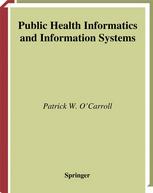

Most ebook files are in PDF format, so you can easily read them using various software such as Foxit Reader or directly on the Google Chrome browser.
Some ebook files are released by publishers in other formats such as .awz, .mobi, .epub, .fb2, etc. You may need to install specific software to read these formats on mobile/PC, such as Calibre.
Please read the tutorial at this link: https://ebookbell.com/faq
We offer FREE conversion to the popular formats you request; however, this may take some time. Therefore, right after payment, please email us, and we will try to provide the service as quickly as possible.
For some exceptional file formats or broken links (if any), please refrain from opening any disputes. Instead, email us first, and we will try to assist within a maximum of 6 hours.
EbookBell Team

0.0
0 reviewsLet us not go over the old ground, let us rather prepare for what is to come. —Marcus Tullius Cicero Improvements in the health status of communities depend on effective public health and healthcare infrastructures. These infrastructures are increasingly electronic and tied to the Internet. Incorporating emerging technologies into the service of the community has become a required task for every public health leader. The revolution in information technology challenges every sector of the health enterprise. Individuals, care providers, and public health agencies can all benefit as we reshape public health through the adoption of new infor- tion systems, use of electronic methods for disease surveillance, and refor- tion of outmoded processes. However, realizing the benefits will be neither easy nor inexpensive. Technological innovation brings the promise of new ways of improving health. Individuals have become more involved in knowing about, and managing and improving, their own health through Internet access. Similarly, healthcare p- viders are transforming the ways in which they assess, treat, and document - tient care through their use of new technologies. For example, point-of-care and palm-type devices will soon be capable of uniquely identifying patients, s- porting patient care, and documenting treatment simply and efficiently.